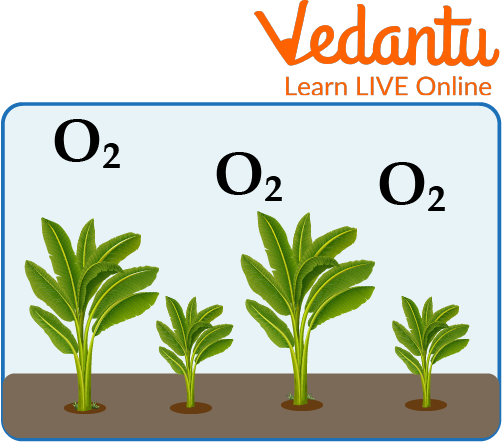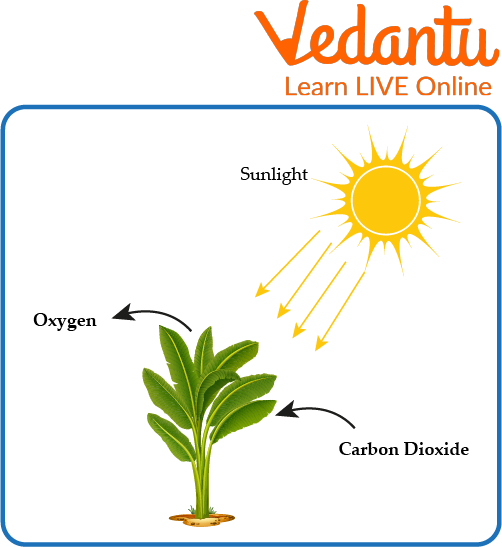




An Introduction to the Most Important Gas: Oxygen
Oxygen is the name of the chemical element with the atomic number 8 and the letter O. It belongs to the periodic table's chalcogen group, is a very reactive non-metal, and is an oxidising agent that easily produces oxides with most elements as well as other compounds. The most prevalent element in the cosmos and on Earth, oxygen comes in third place after hydrogen and helium. The Earth's atmosphere is currently made up of 20.95% diatomic oxygen gas.
In this article, let’s read more about oxygen, its uses, and its significance.

Oxygen
What is Oxygen?
Chemical elements are substances that only contain one kind of atom, such as oxygen. At room temperature, oxygen is a flavourless, colourless, and odourless gas. In nature, oxygen exists as a molecule. People must breathe in oxygen, an odourless and colourless gas.
Biological Importance of Oxygen
Since oxygen is used by the body to "burn" food molecules, it is crucial for respiration. When an animal breathes in, it takes in oxygen and exhales carbon dioxide. Nearly 21% of the total gases in air are oxygen, with physiologically inert nitrogen making up the majority of the other gases. A person's expelled breath includes roughly 16% oxygen, compared to the 21% that they intake.
By using the energy of sunlight to create oxygen from water and carbon dioxide, photosynthesis continuously replenishes the amount of oxygen in the atmosphere of the Earth.

Importance of Oxygen
Significance of Oxygen
The crust of the earth is made up of four sphere-shaped shells. The lithosphere, the hydrosphere, the atmosphere, and the biosphere are these. With a 53.8% atom abundance, oxygen is the element that is most abundant in the crust of the earth (Gilbert, 1964). Respiration is the energy-generating mechanism that fuels the majority of living things' metabolisms. Many organisms, including humans, depend on oxygen in the air to survive.
How is Oxygen Helpful for Us?
Since it is necessary for both human and animal breathing, oxygen is essential for life. Additionally, oxygen is crucial to combustion. It is in favour of burning. Insects use oxygen for growth, reproduction, and the energy conversion of food. All living things' cells engage in cellular respiration. Inside the cell, food (glucose) is broken down into carbon dioxide and water using oxygen. When glucose is broken down by the use of oxygen, it is called aerobic respiration. Food can break down even in the absence of oxygen.
Industrial Uses of Oxygen
Oxygen is used in a variety of industrial processes, including those that refine and fabricate steel and other metals, as well as those that make chemicals, medicines, petroleum products, glass, ceramics, pulp, and paper. In municipal and industrial effluent treatment systems and facilities, it is utilised to safeguard the environment.
In order of importance, the following are the main uses of oxygen:
Melting, refining, and production of steel and other metals
The production of chemicals through controlled oxidation
Rocket propulsion
The provision of medical and biological life support
The extraction, production, and manufacturing of stone and glass products.

Uses of Oxygen
10 Uses of Oxygen
Here are 10 uses of oxygen we must know of:
For cells to engage in aerobic respiration, which enables the extraction of energy from consumed nutrients, oxygen is required. Therefore, additional oxygen at home and in medical facilities is essential for those with lung diseases like emphysema.
Mountaineers utilise compressed oxygen tanks at high altitudes to compensate for the decreased oxygen pressure present there.
Surgery patients who are purposefully paralysed during medical operations require additional oxygen to maintain their important organ functioning.
Certain anaerobic bacteria that are killed by sufficient exposure to the gas can be sterilised using oxygen.
The reaction that turns carbon into carbon dioxide gas during the high-temperature process of making steel in a blast furnace requires oxygen.
In missiles and rockets, liquid oxygen is frequently used as an oxidising agent. When combined with liquid hydrogen, this reaction generates the powerful thrust required for takeoff. The oxygen found in astronaut spacesuits is almost entirely clean.
Hydrocarbon compounds are broken down by heating and then degraded by oxygen. With the help of this, combustion is produced, which typically releases carbon dioxide and water but can also release the hydrocarbons acetylene, propylene, and ethylene.
Sewage treatment and water purification facilities employ oxygen. To enhance the number of bacteria that metabolise waste products in the water, it is forced via water.
In objects not connected to a source of electricity of their own, such as generators and vehicles, oxygen gas is required to produce energy (e.g. ships, aeroplanes and cars).
Every living creature uses oxygen for breathing and respiration.
Summary
To conclude all the conceptual understanding regarding oxygen in this article, we can say that the chemical element oxygen has an atomic number of 8. (It has eight protons in its nucleus). At normal temperatures and pressures, oxygen transforms into the chemical compound (O2) of two atoms, which is a colourless gas. There are four ways that chemists can depict molecular oxygen. We read about this odourless gas in this article. We also discussed its uses and significance.
FAQs on Uses of Oxygen
1. What distinguishes breathing from respiration?
The act of mechanically taking in air and exhaling it is called breathing. There aren't any enzymes involved. It entails consuming oxygen and exhaling carbon dioxide. Enzymes play a crucial role in the intricate metabolic process of respiration. Glucose is converted into carbon dioxide, water, and energy throughout this process.
2. Which gas do plants take in?
The process of photosynthesis is performed by plants in sunlight during the day. Due to which plants take carbon dioxide and produce oxygen. The process of photosynthesis stops at night, due to which plants also take oxygen and produce carbon dioxide.
3. Do forests produce more oxygen?
There is a myth that the oxygen we breathe is considerably influenced by the rainforests. The majority of oxygen is really consumed by the animals and microscopic creatures that inhabit the jungle. Due to this, the rainforest, or any forest, actually produces almost no net oxygen.









